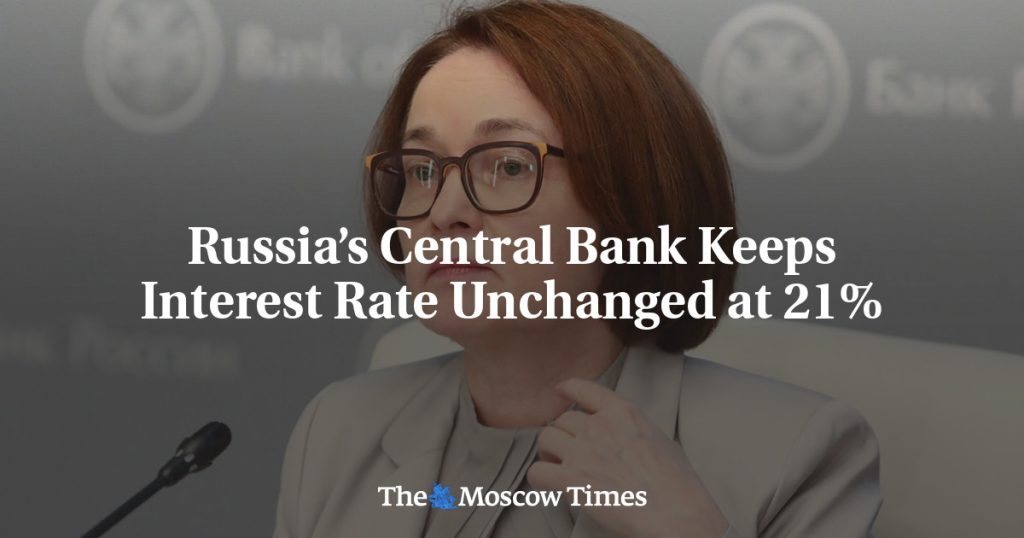Summarize this content to 2000 words in 6 paragraphs
Russia’s Central Bank kept its key interest rate steady at 21% on Friday, defying expectations that it would increase the rate by one or two percentage points.
Analysts at the majority state-owned Sberbank said earlier that they believed the Central Bank would raise its key interest rate to as high as 23% this month as it continues to battle against rising prices. So, too, did the regulator signal future hikes at its last meeting in October, when it raised the key rate to its current historic high.
But on Friday, Russia’s Central Bank said that the increase in borrowing costs and the cooling of credit activity has “created the necessary prerequisites for resuming disinflation processes and returning inflation to the target.”
While inflation remains elevated, the bank expressed confidence that, with its current monetary policy stance, “annual inflation will decline to 4% in 2026 and stay at the target further on.”
However, the Central Bank acknowledged that inflationary pressures persist, partly due to the ruble’s depreciation, with annual inflation rising to 9.5% as of mid-December. Despite this, the bank indicated it would continue to evaluate the need for a rate hike, with future decisions based on “lending and inflation dynamics.”
Those conditions, which include a notable rise in borrowing costs and a slowdown in credit activity, are seen as laying the groundwork for disinflation and a return to the inflation target, the bank said.
Central Bank Governor Elvira Nabiullina said at a press conference later on Friday that the economy was starting to see “tight monetary and credit conditions that should ensure the slowing of inflation in the coming quarters… Therefore, we paused raising the key interest rate.”
Russia has faced volatile prices since it sent troops into Ukraine in February 2022, triggering a barrage of Western sanctions and strict countermeasures in a bid to stabilize the economy.
Defense spending has soared as Moscow ramps up arms production for the war in Ukraine, with President Vladimir Putin saying that Russia is set to spend almost 9% of its GDP on defense and security this year, a figure unprecedented since the days of the Soviet Union.
At his annual press conference and call-in program on Thursday, the Kremlin leader said growing inflation was an “alarming signal,” but added that wages and real disposable income have grown as well. “The situation is stable and secure as a whole,” he said.
T-Investments chief economist Sofia Donets called the Central Bank’s decision to maintain its current 21% key rate a “surprise.”
“We are finally going softer, according to a softer scenario, apparently there has been a big turnaround in credit and the economy,” Donets said. “The focus is on the idea that tightening seems to have achieved its goal — credit growth is slowing.”
“These are preliminary figures, and we don’t yet have full information on the financial sector, but the process appears to be gaining momentum,” she added.
However, some analysts saw Friday’s unexpected decision as a sign the Central Bank is “putting on a brave face amid unsustainable political pressure.”
“The test for the regulator’s independence — so far preserved by the Kremlin — will come at the next rate meeting,” Alexander Kolyandr, a financial analyst and non-resident senior scholar at the Center for European Policy Analysis, said in comments to AFP.
The Moscow Exchange index was up more than 6% following Friday’s key rate decision. The ruble was trading at 102.6 against the dollar.
Russia’s Central Bank will hold its next rate meeting on Feb. 14, 2025.


